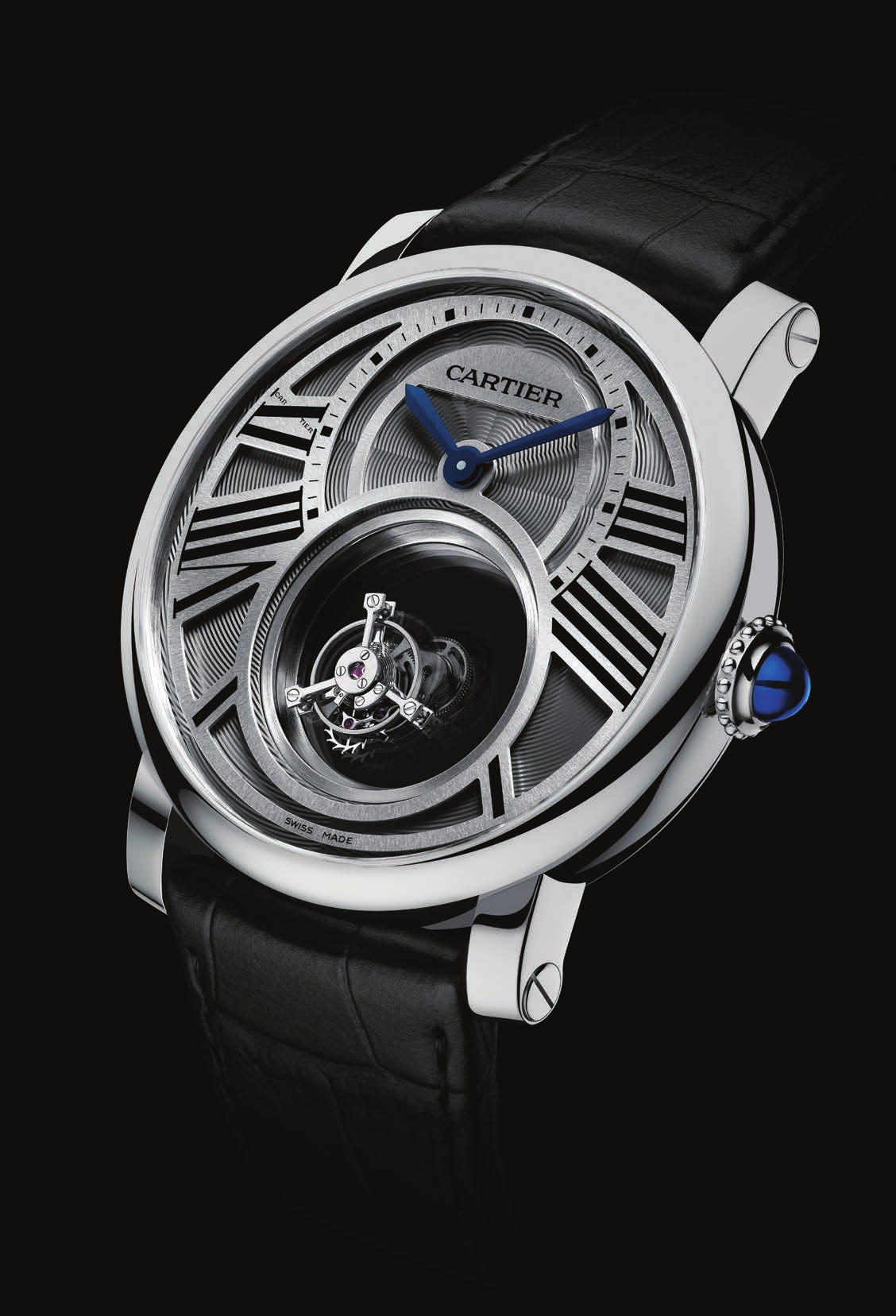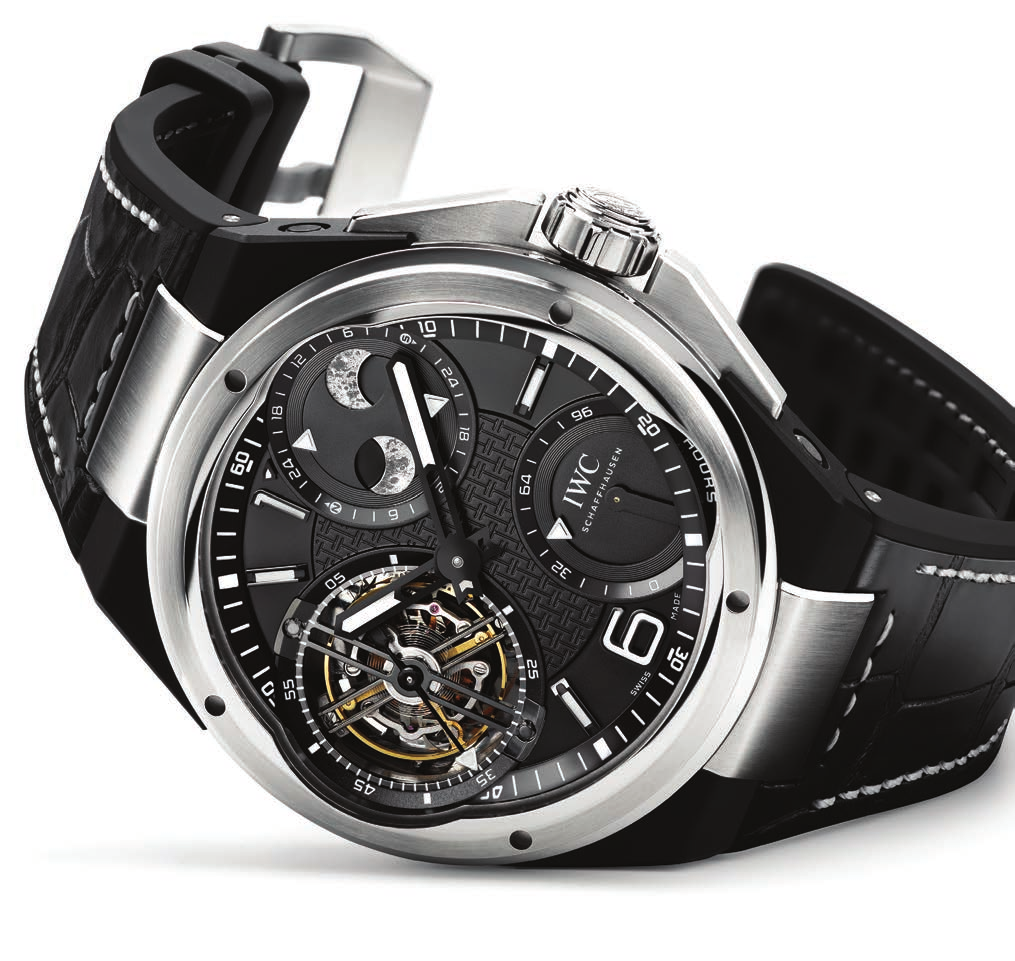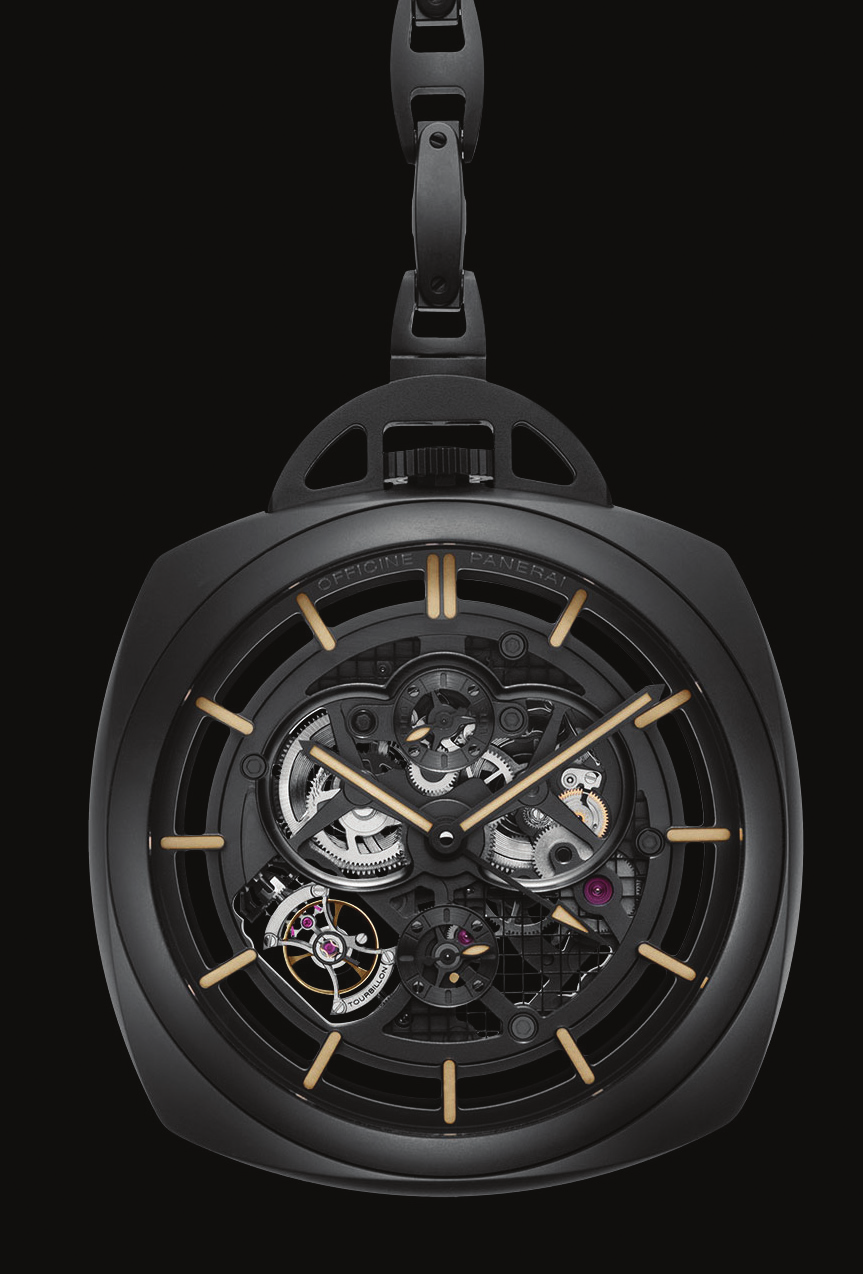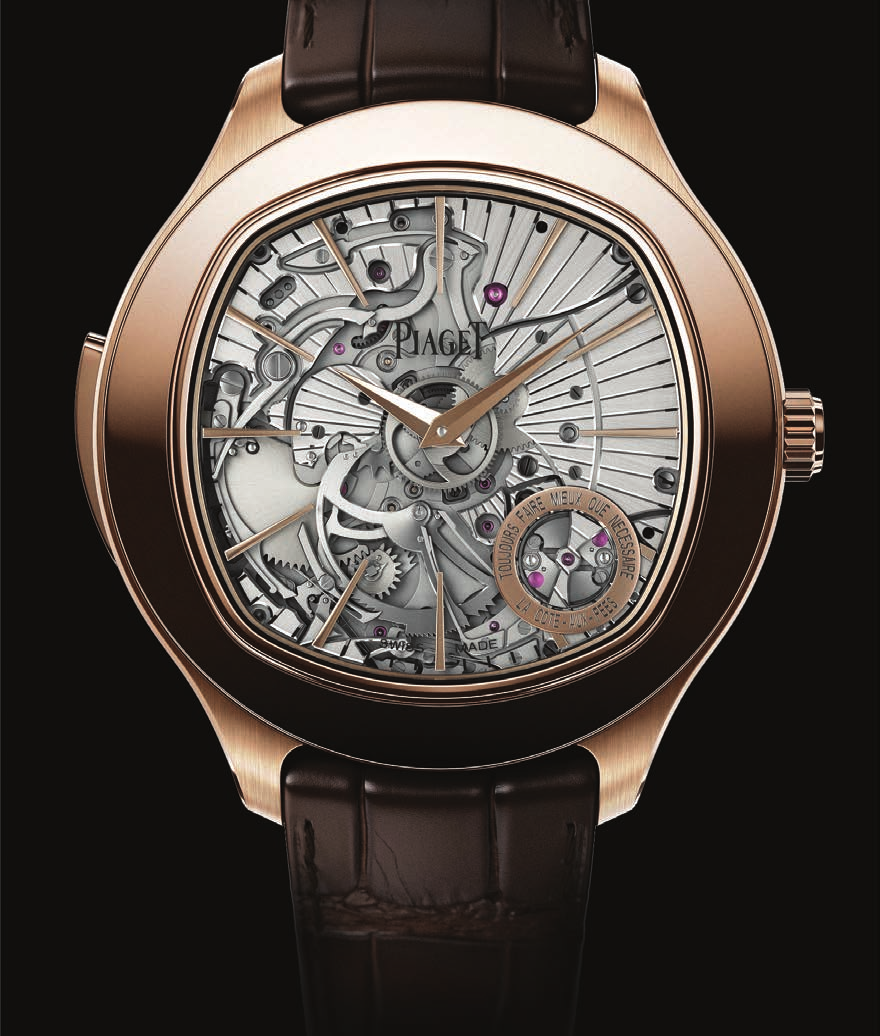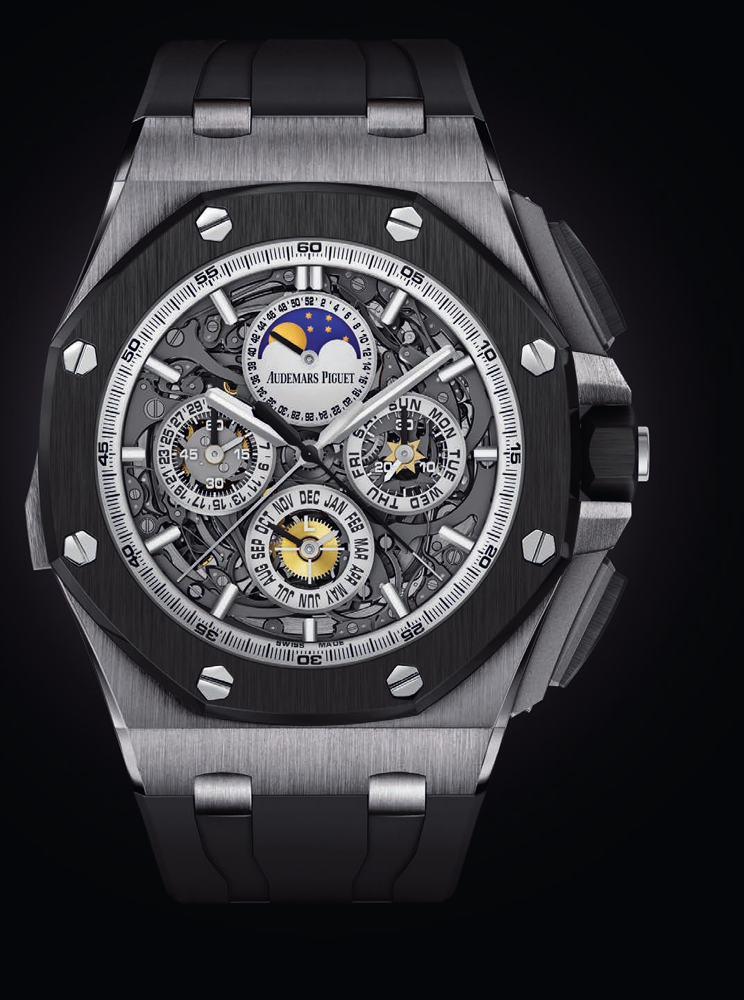It’s been exactly two hundred and twelve years since th e inventor of the tourbillon–Abraham Louis Breguet, the Swiss-born watchmaker who rose to fame in Paris and is today considered one of the greatest watchmakers of all time –was granted his patent, and the tourbillon continues to be the complication around which some of the world’s most beautiful and exclusive watches
There is nothing in watchmaking quite like it, and the oscillation of the balance combined with the rotation of the tourbillon seem to bring the passage of time to life like nothing else.
The tourbillon’s original purpose was not visual ornamentation –instead, it was intended to solve a very specific problem, which is that a watch, held in different positions, runs at slightly different rates thanks to the effect of gravity on the components that actually keep time (chiefly, the oscillating balance and its spiral balance spring.) It does so by placing these components in a rotating cage, or carriage, so that they’re never in any single position for long; this creates a single average error rate for all the vertical positions in which a watch is usually timed by a watchmaker, which can then (or so the theory goes) easily be adjusted to match the flat positions (such as the dial-up position a watch assumes when placed on a bedside table for the night.) Since its invention virtually every aspect of the tourbillon has been debated, from its utility in its original purpose to its status as a complication (it may come as a surprise that there’s a vocal minority in the watch world that don’t consider the tourbillon a complication at all, as it delivers no information to the user –rather, it is considered a regulating device.)
It’s perhaps thanks to the vitality of these ongoing debates that the tourbillon still fascinates after more than two centuries –that, and the fact that it’s so interesting to look at. There is nothing in watchmaking quite like it, and the oscillation of the balance combined with the rotation of the tourbillon seem to bring the passage of time to life like nothing else.
As evidence of its apparently undiminished ability to mesmerize the eye and fascinate the mind, we proudly present five of the most intriguing tourbillons we saw last month at the 2013 Salon International de la Haute Horlogerie –the exclusive, invitation-only exhibition held annually in Geneva by the Richemont group of fine watchmaking firms and a select small group of associated luxury watchmakers.
In 2013, Cartier’s launched its Double Mystery Tourbillon, in which the flying tourbillon carriage is set into a rotating sapphire disk –both the tourbillon itself, and the disk which carries it, seem to turn without any linkage to the rest of the movement.
The Temptation of Transparency: Cartier’s Rotonde de Cartier Double Mystery Tourbillon.
The Temptation of Transparency: Cartier’s Rotonde de Cartier Double Mystery Tourbillon. Cartier’s probably best known –even today –for classics watches like the Santos-Dumont, Pasha, and the Tank, but look back through its history and you’ll see some watches and clocks like none others ever made. Among the most exceptional are its mystery clocks, which first appeared in 1912 –these were clocks in which the hands were set in rock crystal disks, which appeared to move without any visible connection to any mechanism. In 2013, Cartier’s launched its Double Mystery Tourbillon, in which the flying tourbillon carriage is set into a rotating sapphire disk –both the tourbillon itself, and the disk which carries it, seem to turn without any linkage to the rest of the movement. Since both the sapphire “mystery disk” and tourbillon rotate, this is technically a double tourbillon –the inner carriage turns once per minute, and the outer, once every five minutes. Mystery clocks were originally invented by Jean Robert-Houdin, the 19th century illusionist who’s considered the father of modern stage magic, and we think the Double Mystery Tourbillon’s a tour-deforce of watchmaking prestidigitation that would have made him proud.
Power and Precision: The IWC Ingenieur Constant Force Tourbillon.
IWC has, in recent years, elected to make each year’s theme the refresh of one of its core product families, and this year, it was the turn of the Ingenieur family. The Ingenieur watch line’s been around since the 1950s and the first were so named because they were designed for those in engineering and other professions who needed a tough, reliable, very accurate watch that also had a high degree of resistance to magnetic fields, and Ingenieur models were made that could resist magnetic fields strong enough to pull the fillings out of your teeth –the most antimagnetic could shrug off fields of up to 500,000 A/m (amperes per meter.) Though resistance to magnetic fields is no longer the only raison d’etre of the Ingenieur models, they’ve retained the spirit of high precision and performance that’s their heritage, and in that spirit, this year IWC introduced the Ingenieur Constant Force Tourbillon. This one’s a rare bird indeed. A little background: in most watches, the mainspring gradually loses torque as it runs down (a phenomenon familiar to anyone who’s ever watched a wind-up toy grind to a halt) and as torque decreases, the accuracy of the watch begins to suffer. To solve this problem a device called the remontoire d’egalité was invented –the earliest, which was gravity powered, in the late 16th century, and the one used in watches, which consists of what’s basically a second mainspring that’s rewound periodically by the primary mainspring, was developed by the famed marine chronometer maker John Harrison. Complex and expensive to make, the remontoire d’egalité –the “constant force” mechanism referred to –is even rarer than the tourbillon, and the watches that combine the two are even more so. This exceptionally unusual watch also features a beautifully done dual moonphase display, as well as a very elegantly executed power reserve indication, but of course, the main event here is the constant force tourbillon – with its constant force mechanism mounted on the carriage, it will provide the owner with a view that few in five centuries of watchmaking have been privileged to see.
Pocket Whirlwind: The Panerai Pocket Watch Tourbillon GM T Ceramica.
One of the things we constantly wish we could see more of are pocket watches –as well as men with the savoir-faire to wear them, and companies with the nerve to make them. For most of the history of watchmaking (we’re talking five centuries or so, at least in Europe) “watch” meant “pocket watch” –when wristwatches were first introduced they were decried as a terrible idea –undignified, easy to damage, and suitable if at all only for ornamenting a woman’s wrist. It wasn’t until they became commonplace during the First World War that they became respectable for men (the same phenomenon that made the trench coat stylish.) The fact is, many of the larger wristwatches we see are just begging to be pocket watches –they would be far more interesting, and make far more sense from a design standpoint, than they do as wristwatches, and we can think of few better examples of a pocket watch that seems, as it were, to the manor born, that this year’s Panerai Pocket Watch Tourbillon GMT Ceramica. It’s very pleasantly sized at 59mm and the Radiomirstyle case does exactly what a pocket watch should do –it nestles comfortably in the hand and offers a tactile pleasure no wristwatch can. The case is zirconium oxide ceramic, a tough, very scratch resistant material that could easily laugh off the effects of other objects in the pocket (not that you would throw it into the same pocket as your keys, but you could.) Inside is the Panerai calibre P2005, which is one of the most interesting tourbillon movements currently in production –its axis of rotation is perpendicular to that of the balance (unlike virtually every other tourbillon, in which the balance and tourbillon carriage rotate in the same plane) and it turns at twice the speed of a normal, classical tourbillon; P2005 makes two revolutions per minute. Its black ceramic chain’s a perfect accent, and it can easily be removed to allow the watch to function as a not-so-small table clock as well. The P2005 movement was originally developed especially to adapt the tourbillon to fulfill its original function in a wristwatch, and it’s a delicious twist of fate that finds it in one of the most interesting pocket watches of the year.
The Fourth Dimension In 3D: Jaeger LeCoultre Presents The Master Grande Tradition Gyrotourbillon 3 Jubilee.
The art of the multi-axis tourbillon –that is, one in which two cages turn on different axes (as opposed to the double tourbillons in which the two cages turn on the same, or on parallel axes) is one rarely practiced, thanks to the exponentially greater cost and difficulty associated with making them. Even a conventional tourbillon must be constructed to a standard of precision significantly greater than that of a normal watch, if it’s to deliver on its promise of greater precision. Jaeger LeCoultre is one of the very few companies which has created not just one, but several of these ultrademanding thoroughbred machines, and the third of its Gyrotourbillons –the name it’s given to its series of multi-axis tourbillons –is, we think, the most successful yet.
The center of the Master Grand Tradition Gyrotourbillon 3 is the mult-axis tourbillon, which does its horological dance-of-the-sevenveils in an aperture at the bottom quarter of the dial. The two carriages rotate at different speeds –the inner, once every 24 seconds, and the outer, once per minute –and the entire assembly, which racks up a count of over one hundred individual components, weighs in at less than one gram. The balance is in blued gold, but one of the most fascinating elements is the spherical balance spring –a rarity virtually never encountered in modern watchmaking, the spherical balance spring was originally developed for use in marine chronometers, though debate still exists as to whether the shape offers any practical benefit over a conventional overcoil balance spring. Savants may argue but there’s no gainsaying its beauty. The Master Grand Tradition Gyrotourbillon 3 doesn’t stop there –it also incorporates a monopusher chronograph, with the elapsed minutes shown on a double jumping digital display on the chronograph sub-dial. The time is shown on another subdial at the upper quarter of the watch, and the composition’s rounded off by a day/night indication at the 3:00 position.
Though it’s undoubtedly a technically remarkable watch, we think that what Jaeger LeCoultre’s really to be commended for is taking what could have been something of a design train wreck and turning it into a wonderfully harmonious design. There is, to put it mildly, a lot going on in this watch, and we’ve all too often see highly complicated, technically sophisticated watches that fail disastrously from a design standpoint. Not this one. It’s as elegantly executed as it is technically breathtaking –stunning evidence of the practiced hands and eyes in residence at the company rightly known as “the Grand Maison.”
Diva: The Piaget Emperador Minute Repeater.
There are a lot of ways to interpret the concept of elegance, but in watchmaking, for centuries the ability to create an extremely thin movement has been consideredn not only a demonstration of watchmaking mastery (the minute clearances involved make creating any extra-thin movement extra demanding) but also a prerequisite for creating the most elegant watches as well. If there’s a single firm most strongly associated with this particular horological specialty, it’s Piaget –the company has been setting records in ultra-thin watchmaking since the 1950s, and this year, set yet another with the introduction of the Piaget Emperador Minute Repeater.
The Emperador Minute Repeater is, as Piaget says, the thinnest minute repeater in its category ever made. When it comes to boasting rights in extra thin watchmaking, there are a few things to keep in mind –different firms hold different records for different types of watches; for instance, there’s a difference between the world’s thinnest hand-wound movement, the world’s thinnest micro-rotor self-winding watch, the world’s thinnest full rotor self-winding watch, and so on. The Emperador Minute Repeater is the slimmest self-winding, micro-rotor equipped minute repeater in the world, and, terminological hair-splitting aside, it’s a tremendous technical and aesthetic achievement. The creation of an extra-thin minute repeater alone is an accomplishment far beyond the ability of most watchmaking firms –the repeater is generally considered the most difficult of all complications to execute –and the addition of an automatic winding system makes the challenge even more daunting, as the automatic winding train has to be incorporated into what’s already an extremely crowded space. In the Piaget Emperador minute repeater, the use of a micro-rotor set into the plate of the watch itself means that many of the components had to be rearranged –the slide, for instance, for arming and setting off the chimes is pushed downwards rather than upwards, thanks to the different orientation of the components. With some components as thin there’s a difference between the world’s thinnest hand-wound movement, the world’s thinnest micro-rotor self-winding watch, the world’s thinnest full rotor self-winding watch, and so on. as 0.07mm, it’s a miracle of miniaturization; the movement is a mere 4.8mm thick and the watch overall, only 9.4mm.
Entirely made and finished in-house by Piaget, it’s one of the finest examples in existence of the art of ultra-thin watchmaking taken to its most extreme. Did we mention it sounds gorgeous?







